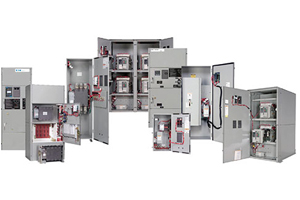How A Camshaft Position Sensor Works ( Steps for Fixing if it Fails)
Author:admin Date: 2025-06-25 08:15 Views:231
11 Symptoms of a Bad Camshaft Sensor (How to Test & Fix)
A vehicle relies on a combination of sensors to make it work smoothly. That is why you are likely to come across a fuel pressure sensor, mass airflow sensor, crankshaft position sensor, and camshaft position sensor. Combined with other sensors, all these feed the Engine Control Module (ECM) or ECU with the relevant information to keep the vehicle performing optimally. Our focus today is on the camshaft position sensor. Let us see what it is, the working mechanism, types, and more.
- What is a Camshaft Position Sensor?
- Importance of a Camshaft Position Sensor
- How Does a Camshaft Position Sensor Work?
- Types of Camshaft Position Sensors
- Signs and Symptoms of a Failing Camshaft Position Sensor
- Causes of Camshaft Position Sensor Failure
- Steps on How to Replace a Camshaft Position Sensor
- Camshaft Position Sensor vs. Crankshaft Position Sensor: The Difference
- Conclusión
What is a Camshaft Position Sensor?
A camshaft position sensor is an electronic component in a vehicle’s engine that monitors the camshaft’s position and rotational speed. Such information is key to the ECU’s precise control of ignition timing and fuel injection, resulting in optimized engine performance and fuel efficiency.

Importance of a Camshaft Position Sensor
Having the right camshaft position sensor helps a lot with many things. Here is what a camshaft position sensor can do in your vehicle’s engine.
Precise Ignition Timing
The sensor is key to the operation of the engine by providing the exact position of the camshaft so that the ECU can determine what is the optimal time for igniting the air-fuel mixture in each cylinder. This proper timing is necessary to ensure efficient combustion and power delivery.
Fuel Injection Synchronization
The camshaft position sensor also plays a part in fuel injection. Once the ECU knows the camshaft position, it synchronizes the fuel injectors’ closing and opening with the engine’s firing order. This ensures fuel is delivered at the right time for each engine cylinder.
Variable Vale Timing Control
You are likely to find engines with the VVT technology. So, the camshaft position sensor data is necessary to adjust valve timing. The result is having an engine optimized for performance and fuel efficiency across different loads and speeds.
Engine Performance and Efficiency
Since the engine will now perform optimally, you get smooth acceleration, reduced emissions, and improved fuel economy. That is why you always have to watch out for the failing camshaft position sensor symptoms and deal with them immediately to keep the vehicle working optimally.
Avoiding Engine Performance Issues
It is vital to know how to test the camshaft position sensors, as sometimes a change in engine performance can point to a damaged camshaft position sensor. Some performance issues might include rough idling, reduced power, and sometimes engine stalling. As such, you need the sensor to be in good condition for a smooth engine operation, among other benefits mentioned above.
How Does a Camshaft Position Sensor Work?

A camshaft position sensor detects the camshaft’s position using the Hall effect, magnetoresistive, or inductive sensing capability, depending on the type of sensor used.
An electrical signal is generated, usually in the form of pulses corresponding to the camshaft position. This signal is sent to the ECU for interpretation. From this information, the ECU can understand the camshaft’s speed and position, which are vital in the engine’s performance.
Types of Camshaft Position Sensors
Now that we know what does a camshaft position sensor do, we can also look at the different types available. They include the magnetic or inductive and Hall effect camshaft position sensor. Below are more details.
Magnetic (Inductive) Camshaft Position Sensor

This type of sensor has two wires and generates an AC signal as the reluctor ring on the camshaft passes by it. Its construction includes a coil of wire wrapped around a magnet. As the toothed wheel or reluctor ring passes through this magnetic field, it induces a voltage in the coil that is used to determine the camshaft position and speed.
Expect to come across this type of sensor in older vehicles. It can either be inside the distributor or mounted on the camshaft itself.
The biggest advantages include a simple design and robustness. However, the sensor might be susceptible to electrical noise, which affects its performance.
Hall Effect Camshaft Position Sensor

In this case, the sensors use a Hall effect element, which is basically a semiconductor for detecting changes in magnetic fields. Unlike the other type above, here you have a power source, ground, and signal wires.
The construction is also different. It includes a slotted wheel or ring that rotates past the sensor. As this slot passes, the magnetic field changes. The sensor also switches on and off repeatedly to generate a digital signal.
Because of the improved design, it is a common sensor in modern vehicles. It is also more reliable and accurate than the magnetic sensors. Expect it to be less susceptible to noise and will produce a digital signal that the ECU interprets easily.
Signs and Symptoms of a Failing Camshaft Position Sensor
Before we can look into how to replace camshaft position sensor o how to reset camshaft position sensor, let us first understand the signs and symptoms that will alert you that there is a problem with the sensor.
- Check engine light: A check engine light can mean many things, including a problem with the camshaft position sensor. It is best to perform a diagnostic scan to help reveal the fault code related to this type of sensor.
- Engine misfires: The data from the camshaft position sensor is vital for determining the proper functioning of the engine. This includes ignition time and fuel injection. If the sensor is faulty, timing can be off, leading to misfires.
- Rough idling or stalling: A failing sensor can also lead to issues such as rough idling or stalling altogether. This is because of an improper air-fuel mixture.
- Difficulty starting: If the sensor does not give accurate data, the engine may have issues starting or take longer than usual to crank.
- Reduced power and acceleration: The sensor is still important in engine performance. If it is faulty, you may sometimes experience sluggish acceleration and a loss of power.
- Poor fuel economy: Since the engine is not working optimally, this may lead to decreased fuel efficiency until the sensor is replaced.
Causes of Camshaft Position Sensor Failure
You might wonder what causes these issues in the first place. Most of the time, it is normal wear and tear. This is possible because the sensor is a mechanical component that can wear out over time due to normal use and aging. This would cause its internal components to degrade and eventually fail.
Another possible reason is heat exposure. When the engine compartment reaches high temperatures, it can start to affect other components, including the sensors. Sometimes in extreme heat, the sensors can malfunction or even melt, leading to failure and other issues.
Dirt and moisture are other reasons you may experience bad camshaft position sensor symptoms. Water or dirt can interfere with the sensor readings or sometimes corrode the internal components, disrupting the sensor’s capability to detect the camshaft position.
Check wiring and connection issues. Damaged wiring or loose connections mean the camshaft position sensor does not operate optimally. There can also be no signal from the sensor at all. This leads to the various symptoms mentioned above of a faulty sensor, but this time, only a good connection is needed to keep it working correctly.
Steps on How to Replace a Camshaft Position Sensor
Now that you have identified or experienced the symptoms of a bad camshaft position sensor, what next? For most people, you would be looking at how to change a camshaft position sensor. Here is how to do it.
- Start by disconnecting the negative battery terminal as a safety measure to prevent electrical shock or any potential damage to the vehicle’s electrical system.
- Next is to locate the sensor in the process of how to replace a camshaft position sensor. The common locations include near the cylinder head, camshaft gear, or timing cover. You can always refer to the vehicle’s service manual for a more precise location.
- Disconnect the electrical connector. Make sure to press the release latch if available to avoid breaking the connector.
- Use the appropriate tools to remove the old sensor, such as a socket wrench. Once the mounting bolts are removed, simply pull the old sensor from its position.
- Install the new sensor in the same position. Make sure the new O-ring is lubricated with oil for a good seal. Once put in place, secure the sensor with the mounting bolts and tighten.
- Go ahead and reconnect the electrical connector to the newly changed sensor. Reconnect the battery as well and start the vehicle.
- Sometimes, you may have to clear codes from the ECU so that the system can synchronize with the new sensor and work effectively.
Camshaft Position Sensor vs. Crankshaft Position Sensor: The Difference

There is a difference between these two sensors. The camshaft position sensor detects the camshaft’s position and speed, which is vital for controlling the opening and closing of the engine’s intake and exhaust valves.
The camshaft position sensor ensures that the ECU achieves the right air-fuel mixture ratio.
The crankshaft position sensor detects the crankshaft’s rotational position and speed. The data provided by this sensor is vital to determining the engine speed and top-dead center for each cylinder and to setting the correct ignition and fuel injection timing.
Conclusión
The camshaft position sensor remains important to the engine’s performance. Its data helps determine the firing timing and when to open or close injectors. Since the ECU needs this information for optimal engine performance, a sensor in great working condition is definitely needed. That is why you should always replace a failing camshaft position sensor.
Envíe RFQ, le responderemos de inmediato.
Preguntas frecuentes
Should I drive a vehicle with a bad camshaft position sensor? You may be able to drive such a vehicle, but it is not recommended. A bad camshaft position sensor can cause issues, including erratic engine behavior, engine stalling, and reduced fuel efficiency. How can I diagnose a faulty camshaft position sensor? It is best to use an OBD-II scanner. This method is better as it can show codes such as P0340 or P0341 related to a faulty camshaft position sensor. Also, visual inspection of the sensor and wiring can help you see if the sensor is correctly connected. How much does it cost to replace a camshaft position sensor? The cost will likely vary from $200 to $300, including labor and parts. The pricing largely depends on the make and model of the vehicle. Luxury or performance cars will cost more.


